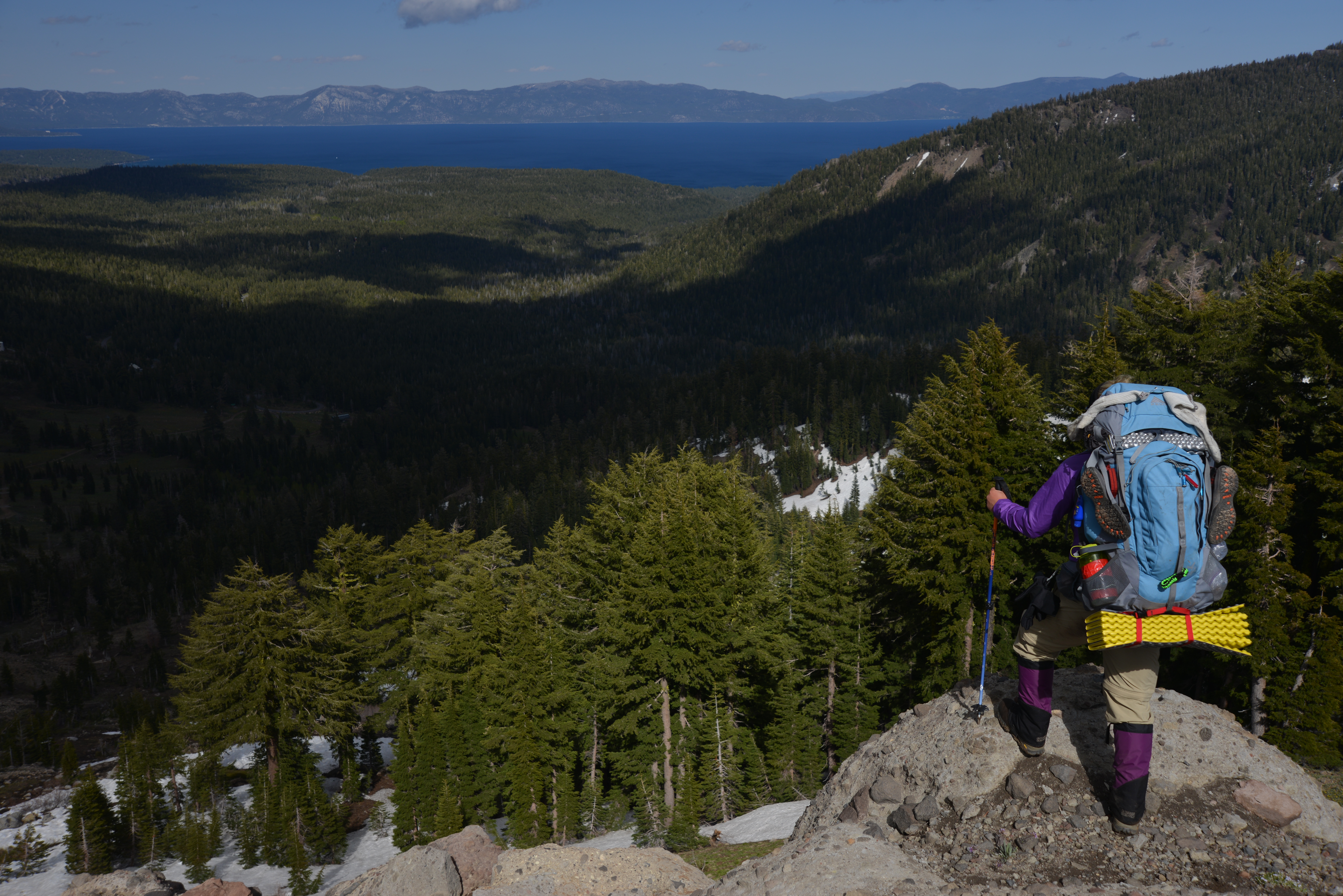I’ve had three encounters over the years that went down exactly like this. On my part, I just stood there, “got big,” and made a lot of noise, while each bear walked toward me, after a great deal of reluctance and immediate searching of the trailside brush for an easy exit.
Each time, the bear found a route off the trail and away from me without any indication of aggression. These were all wild bears with a natural fear of humans.
Predators respect strength and confidence. They can smell it and they assess it in you immediately. Assess your challenger, if it be a wild or “Park” bear, read its intent, focus, and how it regards you, and stand your ground with a wild, naturally fearful of humans, bear
Bears that have become habituated by people food (a.k.a., “Park” bears) know you have it, know you won’t defend it, and will, brazenly, push (threaten, etc.) you away from it in order to get it. These bears hold no natural, original fear of humans and will not respect you. They will test your resolve and do everything that doesn’t require a lot of effort on their part to drive you away from what they’ve gotten in the past (to include bluff-charging and other indications of aggression). Stay away from this kind of aggressive bear.
I’ve had two additional encounters with “Park” bears, one where he got and destroyed my pack to get at two weeks of food inside (I tested his resolve and he threatened me back, so I backed off and watched from a safe distance), and another where I attacked and he ran off surprised as hell (long and entertaining story).
Wild, unhabituated animals (to include the “little bears,” like squirrels, marmots, mice, raccoons, possums, etc.) have a natural fear of and respect for mankind. Know who you are in their eyes and use it to assess and test the intent and focus of the curious animal.
“Park” bears have learned that you will yield, so they will ignore their original, natural fear of you and go right through you to get what they want. When confronted by an aggressive, “Park” bear, stay away from them. Do not challenge them.
In this video (which I haven’t listened to, but I watched), the backpacker did the right thing. By remaining standing and verbal, he didn’t show fear while he was assessing the bear’s intent and focus. A lot was going on by both parties that couldn’t be expressed, physically, in the mutual assessment stage.
These kind of encounters with a wild animal bigger than you are seriously hair-raising and frightening because you don’t know your opponent, what he’s thinking, and what might happen, but they can and do happen out there.
After the assessment stage, it was obvious that the bear wanted to get away from the hiker because he was looking for the nearest exit off the trail. Slowly backing away while facing and “getting big” did not demonstrate a sign of weakness and fear…it showed a sign of respect. The bear was not threatening or aggressive; it was surprised by a non-threatening human and chose to get away as soon as it could.
Note: the hiker was prepared for such an encounter, both with spray and attitude (mind and emotions), not to mention the camera.
Advice: know your opponents in the wild, be they the weather or animals, and respect what they can do. If you don’t know, learn – before you go into their realm. Prepare for all possible harmful encounters, be they from the weather or animals (humans, too), by rehearsing your responses to their possible threats and bringing with you the necessary tools to assure and maintain your safety.
* Trailside vs. In-Camp encounters are vastly different because of intent, one is a surprise encounter with no intent while the other has intent written all over it (the bear suspects food is present and wants to investigate).
* “Black” bears (they come in many colors) are the gentle bruins of the American bear family and hugely different in attitude from its bigger cousin, the Grizzly. Know the difference and, when in their territory, adjust your normal behavior and responses to their presence accordingly.

